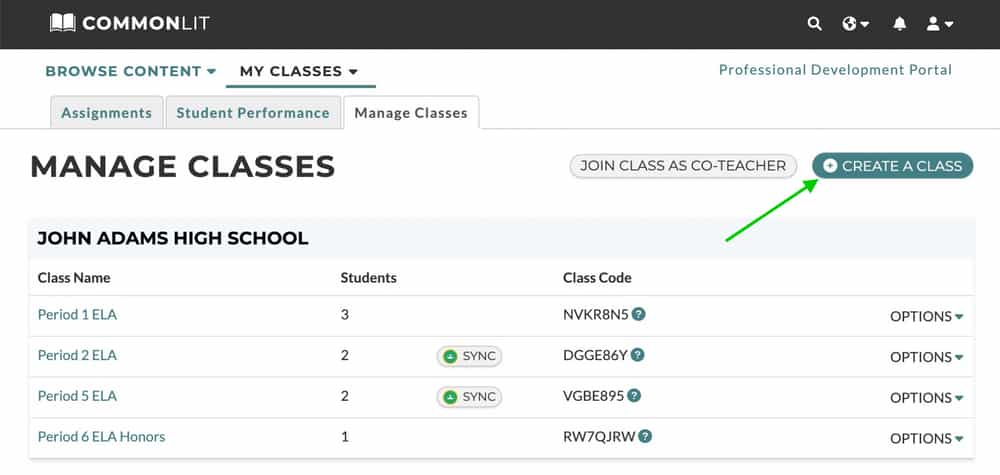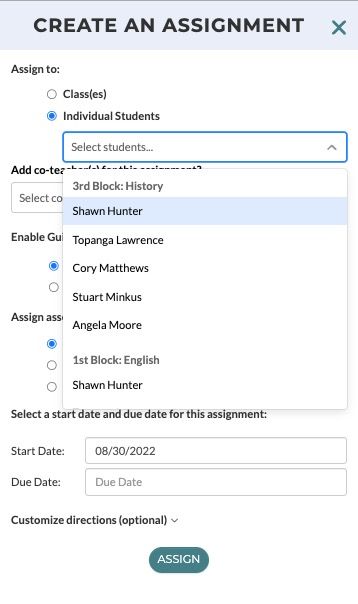CommonLit’s digital library includes over 3,000 free reading passages for students in grades 3–12. The lessons can be assigned digitally through the platform or printed. The library features many diverse and wonderful short stories from authors like Gary Soto, Langston Hughes, and Sandra Cisneros.
While we’re extremely proud of our literacy program's digital assignment features as educators, we know that there is nothing like sharing a great story with your students in person.
With schools employing fully remote or hybrid learning plans, traditional face-to-face instruction is not always possible. In this blog post, we’ll share a few strategies for recording short videos that you can share with your students to watch at home. We believe this strategy could be a great way for you to stay connected to your students, build engagement, and help focus their learning. Recorded videos are also more convenient for families to use flexibly during the day.
Goal:
Create a 5 minute video lesson that 1) introduces students to the reading for the day, 2) frames the lesson and skill focus, and 3) hooks their engagement.
Materials needed:
- A webcam (optional; if your computer doesn’t have one, it should still be able to record audio)
- An application that allows you to record yourself and your screen — in this blog post, I’ll be using Screencastify, a free browser extension. You can learn a bit more about their program here.
- A way to contact students to share the video — this could be via email or through an LMS like Google Classroom, Canvas, or Schoology.
- A reading lesson from CommonLit’s free library
Logistics to keep in mind:
- CommonLit’s online reading lessons can be completed on any computer, tablet, or smartphone.
- CommonLit’s digital annotation tools are only available on computers at this time (i.e. non-touchscreen devices). If you think that many of your students will be completing CommonLit’s lessons on a mobile/touchscreen device, you’ll want to share directions for taking notes on paper.
Let’s get started!
Step 1: Make Sure Your Classes on CommonLit are Set Up
To facilitate your lesson, you’ll need to have classes set up on CommonLit. To learn more about setting up classes on CommonLit, check out this help article.

Step 2: Choose a Great Text
As a teacher, I mostly taught 6th and 7th grade. So, today, I’ll choose one of my former students’ favorite texts, “Thank You, M’am” by Langston Hughes. This is a timeless short story about the power of generosity and forgiveness. You can also check out our Featured Texts Page or Text Sets, for more high-interest texts.

Step 3: Decide the Focus of the Lesson
“Thank, You, M’am” is a really rich text. There are many skills that students can work on as they read. In this case though, I want my students to focus on characterization. In particular, I want students to analyze Ms. Luella Bates Washington Jones as they read the story and make notes on her character traits and behaviors.
To share these directions with students, click the “Assign Text” button. From there, you can customize the focus of the lesson by editing the “Annotation Task.”

Step 4: Record the Video
Now that I have assigned the lesson to my students, I’m ready to film a short video of myself introducing the lesson.
In my video, I want to:
- Let my students know that I’m thinking about them and that I hope they’re doing well!
- Tell them a tiny bit about the story they are about to read and hook their interest.
- Tell them a little bit more information about how they should take notes as they read the passage.
- Start reading a couple of paragraphs out loud, modeling how they should take notes.
- Emphasize the directions and logistics throughout: How can they access the text? What do they need to remember about logging in? How can they contact you if they have questions? How will they get full credit? When is the lesson due? How will this affect their grade?
Next Steps
Browse the CommonLit library to find more great texts!
If you’re interested in learning all about CommonLit’s free digital literacy program, join one of our upcoming webinars!


